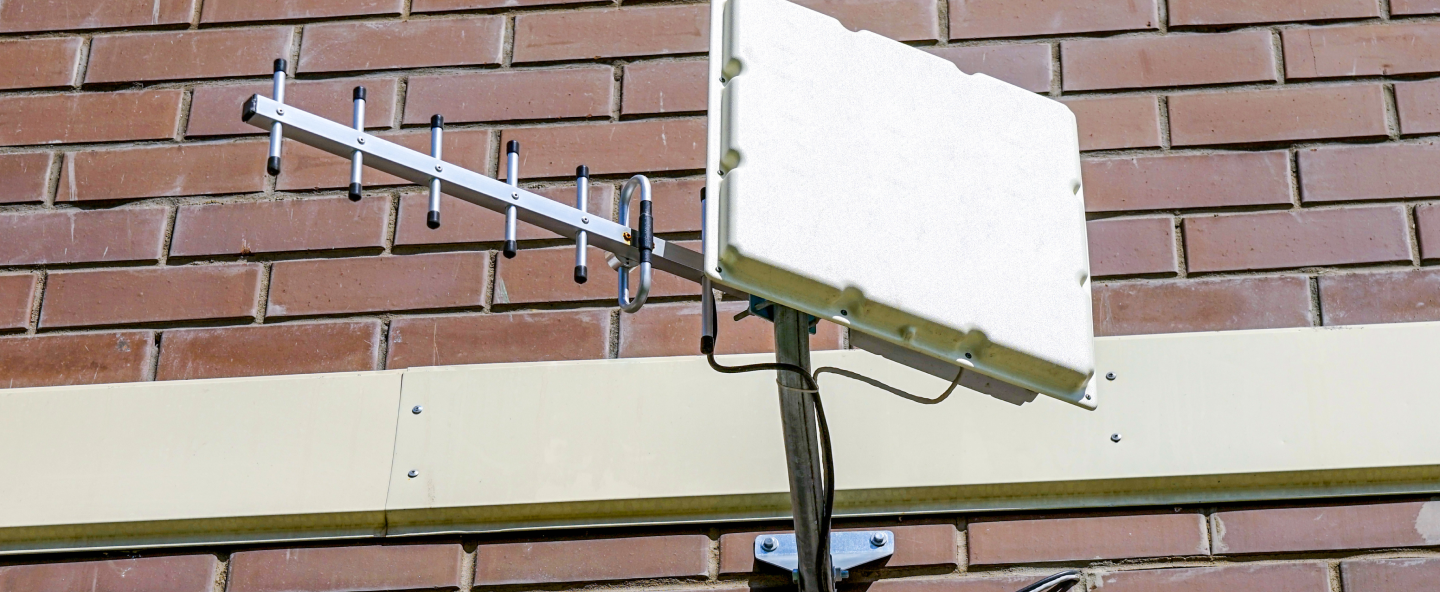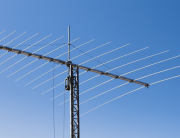If you want to improve the speed of your fixed mobile broadband connection, a directional (or “Yagi”) antenna is usually your best option. A directional antenna only amplifies the radio waves between your setup and the nearest tower, which makes it much better than an omnidirectional antenna at increasing the download and upload speeds of your wireless internet connection.
It’s difficult to predict exactly how much an antenna will increase your internet speeds because variables like your current speeds, the quality of your antenna, and how well you installed your setup all affect the answer. In general though, a directional antenna increase your signal strength up to 20 times over, which is enough to turn a slow connection into a fast one.
Antennas Build Signal Strength, Not Speed Directly
An antenna has a more direct effect on the actual signal strength of your connection measured in decibels relative to a milliwatt (dBm) than it does on the speed of your connection. There is, however, a fairly straightforward link between actual 4G LTE signal strength, user experience of internet speeds, and estimated download speed. Check out this table to see how the three relate:
| Actual Signal Strength | User experience of internet speeds | Estimated download speed |
|---|---|---|
| -50 dBm to -105 dBm | Strong (Clear voice and fast mobile data) | 4-80 Mbps |
| -106 dBm to -125 dBm | Fair (Good voice and reliable mobile data) | 2-4 Mbps |
| -126 dBm to -136 dBm | Bad (good voice but unreliable mobile data) | 0-2 Mbps |
| -136 dBm to -140 dBm | Terrible (voice but no mobile data) | 0 Mbps |
To calculate your actual signal strength before or after you install an antenna, use a cellphone in field test mode. To access field test mode:
On iOS, call *3001#12345#*. A signal strength indicator will pop up in the top left. Tap to switch between signal bars and actual signal strength in decibels per milliwatt (dBm).
On Android, navigate to Settings > About Phone > Network or Status. Under Network or Status, you’ll be able to see actual signal strength in dBm.
Some Antennas Have Higher Signal Gains than Others
Some antennas are more powerful than others. These two design factors affect an antenna’s potential signal gain, which is measured in decibels relative to an isotropic radiator:
- The number of elements in an antenna has the biggest effect on its signal gain. These elements include a reflector, which increases signal strength by up to 5 dB, and multiple directors, which increase signal strength by about 1 dB each.
- The spacing of the elements also impacts an antenna’s signal gain. A longer antenna with wide spaces between the elements is more powerful than a compact antenna.
While the number of elements in an antenna isn’t the only design feature that affects signal gain, you can approximate an antenna’s potential gain based its elements using the formula total signal gain = 5 dB + (number of elements x 1 dB). Total signal gain is a relative value that measures an antenna’s strength compared to a theoretical isotropic radiator. An antenna with a signal gain of 10 dB then, would be 10 times stronger than the radiator.
What Kind of Antenna Setup Maximizes Real Signal Gain?
While the antenna itself is important, your antenna setup has a huge effect on your real signal gain. Be sure to follow these installation tips for directional antennas to maximize your gain.
- Directional antennas send and receive radio waves in one direction. Once you’ve mounted your antenna, connect a phone in field test mode to the antenna and slowly rotate the antenna, stopping to take a reading every 10 degrees. When field test mode registers the highest gain, lock the antenna into place. Because strong winds can move an antenna, repeat this process every few months.
- The radio waves that connect you to the nearest tower scatter when they pass materials with low permeability and permittivity, like structures made of metal or other materials that conduct electricity. Install your antenna facing away from metal structures like steel building frames, metal roofs, or other antennas to prevent obstruction.
An antenna can exponentially increase your signal strength and boost your internet speeds. To find the right directional antenna for your fixed mobile broadband connection, reach out to a representative today.







Leave A Comment